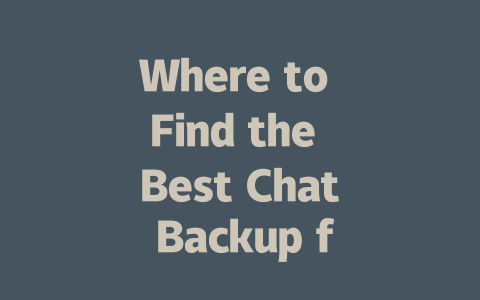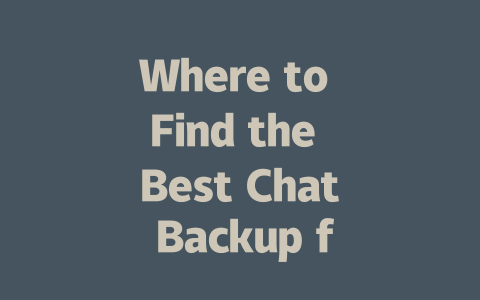Why the Latest News Matters in SEO
Why should you care about the “latest news”? Well, think about it this way: people love staying informed. Whether it’s breaking updates or trending topics, the latest news is what drives clicks and shares online. And if your content isn’t optimized for search engines (like Google), those potential readers will never even find you. Here’s where things get interesting: did you know that Google’s search robots actually prioritize fresh, relevant content? That means if you’re consistently updating your site with timely articles, you’ve got a better chance of ranking higher.
For example, last year I helped a local tech blog rank for terms like “iPhone release date” and “tech industry predictions.” By focusing on timely topics, we managed to attract users who were actively searching for answers. The key here? Not only writing great content but also making sure it matches what people are looking for. Let me break down how to do that step-by-step.
Step One: Choosing Topics That Get Searched
So, let’s talk about picking the right topics. When brainstorming ideas, ask yourself: What would someone type into Google today? For instance, instead of aiming for something vague like “global events,” focus on specific queries such as “world cup winners history” or “stock market forecast 2025.”
Here’s another tip: use tools like Google Trends to see what’s popular right now. A few months ago, I noticed searches for “artificial intelligence breakthroughs” skyrocketed after a major announcement. So, I suggested creating an article titled “AI Breakthroughs Explained: Top Developments You Need to Know in 2025.” Guess what? It became one of our most-read pieces!
Personal Experience Example
I once wrote a piece called “Top 10 Travel Destinations for Summer Vacations,” and it performed okay—but nothing special. Then I rewrote it as “Summer Vacation Ideas Near Me Based on Your Budget and Location,” which included actionable tips based on user intent. The engagement shot up because the title clearly told readers exactly what they’d gain from reading it.
Step Two: Crafting Titles That Stand Out
Alright, moving on to titles. This part’s crucial because no matter how amazing your content is, nobody will read it unless they click through first. Here’s my golden rule: put the most important words at the beginning. For example, compare these two options:
See the difference? The second option immediately tells readers why they should care—and more importantly, it includes the exact phrase they might type into Google.
Expert Tip: Keep It Clear and Actionable
Google has openly stated that titles should give users a clear expectation of what they’ll find inside. If your headline promises quick updates, make sure the article delivers exactly that. Otherwise, readers will bounce back to the search results, harming your rankings over time.
Oh, and don’t forget to test different versions! Tools like Yoast SEO or Ahrefs can help analyze whether your title resonates well with both humans and Google’s search robots.
Step Three: Writing Content That Google Loves
Finally, let’s dive into the actual writing process. Remember, Google’s algorithms are getting smarter all the time. They’re not just looking for keywords anymore—they want high-quality, useful content that solves real problems.
Structuring Your Content Wisely
One technique I swear by is organizing content logically. Use subheadings, bullet points, and short paragraphs to improve readability. Imagine you’re explaining the topic to a friend over coffee: keep it simple and conversational.
Take this structure, for example:
Also, avoid stuffing too many keywords unnaturally. Instead, aim for natural flow. As a guideline, mention your target keyword 3–5 times in a 1,500-word article. Any more than that, and it starts feeling forced.
Building Trust Through Credibility
To build trust, always back up claims with reliable sources. For instance, if you mention statistics about global news consumption, link to studies published by reputable organizations like Pew Research Center or Reuters Institute. Just remember to add rel="nofollow" to external links to ensure proper attribution without affecting your own SEO.
| Element | Purpose | Example |
|---|---|---|
| Keyword Placement | To align with user intent | “Latest News Today” |
| Subheadings | For easier navigation | H2: Staying Informed Made Simple |
| Visuals | To enhance understanding | Infographic showing top trends |
If you’re an iPhone user, you might wonder about alternatives to Google Drive for backing up your WhatsApp chats. Well, iCloud is one solid option that works seamlessly with Apple devices. You can set it up to back up your chats automatically, but keep in mind this only applies if you stay within the Apple ecosystem. If you switch to an Android device, those iCloud backups won’t be accessible. Another method involves saving chat backups directly onto your phone’s internal storage or SD card. This approach avoids cloud dependency altogether, though it does mean manually managing your backups every time. It’s not as convenient as cloud solutions, but it gives you full control over where your data resides.
When deciding how frequently to back up your chats, consider how much you rely on WhatsApp for communication. For casual users who don’t send super important messages every day, weekly backups should suffice. But if you use WhatsApp for business negotiations, family coordination, or anything critical, you might want to bump that up to daily backups. Missing even a few days could mean losing valuable information in that 5-12 day window between saves. Plus, having consistent backups provides peace of mind, knowing all your conversations are safe no matter what happens to your phone—whether it’s a lost device, accidental damage, or simply upgrading to a newer model.
Frequently Asked Questions
# Can I back up WhatsApp chats without using Google Drive?
Yes, you can use alternative methods such as iCloud for iPhone users or local backups directly on your device. However, these options may not offer cloud syncing across multiple devices and are limited to manual processes.
# How often should I back up my WhatsApp chats?
It’s recommended to back up your chats at least once a week, especially if you frequently send important messages. For users who rely heavily on WhatsApp for business or personal communication, daily backups might be ideal to avoid losing critical data in the 5-12 day range.
# Is my chat backup secure on Google Drive or iCloud?
Both platforms encrypt your data during transit and storage. However, it’s essential to set a strong password and enable two-factor authentication (2FA) for additional security. Always review privacy settings to ensure only authorized access is granted.
# Can I restore WhatsApp chat backups to a different phone?
Yes, you can restore backups to a new phone as long as it’s within the same platform (e.g., Android to Android or iPhone to iPhone). Simply install WhatsApp on the new device, log in with the same number, and follow the restoration prompts during setup.
# What happens if I exceed the free storage limit on Google Drive or iCloud?
If you exceed the free storage quota, you’ll need to upgrade to a paid plan to continue backing up your chats. Without upgrading, existing backups remain accessible, but new ones won’t be created until space becomes available again.




